You probably know that protein is the go-to macronutrient for building muscle and getting strong. But did you know it is just as vital for anyone trying to strip body fat?
Protein is, in fact, the key to winning the weight loss war. In this article, we discover what lies behind protein’s fat-fighting power and find out how you can optimize your diet to benefit from this amazing macronutrient. We’ve also included a complete seven-day protein diet plan for weight loss.
Protein and Weight Loss
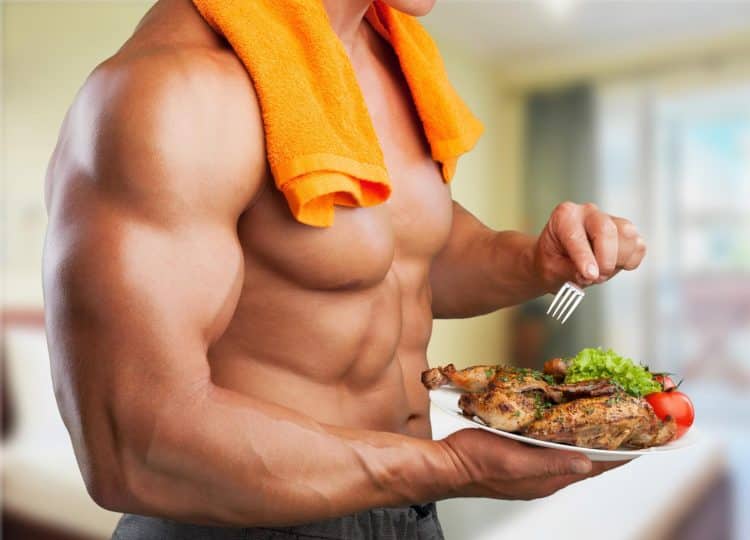
The word protein is derived from the Greek word proteios, meaning ‘most important.’ It is one of the three macronutrients, along with carbohydrates and fats.
There are three ways protein helps us lose body fat:
- It helps us build lean muscle tissue. Once you remove the water, muscle tissue is almost exclusively made of protein.
- Protein has a higher thermic effect than carbohydrates and fat. Around 25% of protein calories are used during digestion, compared to just 6-8% for carbs and 2-3% for fat.
- Protein fills you up, which helps you go longer between meals without feeling hungry.
A large number of studies have shown that the combination of these three factors is effective for fat loss. People that eat more protein lose more fat, retain more muscle tissue, and are satiated for longer throughout the day.
In contrast, studies have shown that lower protein intake leads to overeating, fat gain, and muscle loss. Such results have led some researchers to propound the protein leverage hypothesis, stating that humans should prioritize protein consumption over other dietary components. We eat more food when we have less protein in our meals and vice-versa. [1]
The protein leverage hypothesis seems to gel with what we see in society. Researchers have been scratching their heads for decades at the statistics which show that the wealthiest people in society are also the leanest, while the poorest people are the fattest. Of the three macronutrients, protein is the most expensive. So, if all you eat is low-quality, mass-produced food, you’ll need a lot more to reach your daily protein target.
The bottom line is that you will get bigger and fatter if you eat cheap, low-protein foods.
Not All Proteins Are Created Equal
Protein is a lot like a train engine, with many cars adjoined to it. Each of those cars is an amino acid. You may know that 60% of your body is water. Well, the balance of 40% is mostly taken up with protein. That is because protein is the building mortar of every single part of us. Our skin, hair, toes, muscle cells, and organs are all made of protein.

There are twenty amino acids, which are the building blocks of protein. Of these, nine are essential, meaning the human body cannot manufacture them, and they must come from the foods we eat. The nine essential amino acids are:
- Phenylalanine
- Valine
- Threonine
- Tryptophan
- Methionine
- Leucine
- Isoleucine
- Lysine
- Histidine
When it comes to building muscle, leucine is the most important. Muscle is crucial to fat loss. That’s because muscle tissue takes five times more energy to maintain itself than fat tissue! So, every extra pound of muscle on your body will help you burn more calories throughout the day — even while sleeping.
As a result, a higher amount of muscle mass will give you a higher resting metabolic rate. You will also burn more calories during digestion.
Maximum protein synthesis happens when you have 1.5 grams of leucine in your muscle tissue. Leucine-rich foods include:
- Chicken breast
- Cottage cheese
- Soybeans
- Whey protein
How Much Protein Do You Need?
Researchers have tried to figure out the ideal protein intake in terms of protein leverage. They believe that 30% of total calories is about right.
In a meta-study, researchers examined 24 weight-loss studies that compared higher protein diets (25 to 35% of total calories) with standard protein calories (12 to 18%); study participants ate the same amount of fat and total calories. On average, individuals who ate more protein lost one pound more over various durations, from a month to a year. [2]
Now, you may think that one pound isn’t much. However, the subjects ate the same amount of food. Those eating more protein not only lost slightly more weight but also improved their body composition by gaining a small amount of muscle and eating more fat than those who ate less protein.
So, if you eat 2,000 calories daily, you must consume 750 protein calories daily. To find out how many grams that is, we need to divide that figure by four (because there are 4 calories in every gram of protein).
750 / 4 = 187.5 grams of protein
The most effective way to get this protein into your body is to spread it over the course of your day. Researchers have published several studies in which consuming six meals per day has proven more effective at weight loss than three larger meals. This generally works out to eating every three hours. In the case above, you consume 31.25 grams of protein at each of your six meals. [3]
As I mentioned at the start of this section, the most common belief about protein is that it builds muscle, which can improve your physique aesthetics and make you look like an athlete. But muscle also helps you stay lean by increasing your metabolic rate, enabling you to burn more calories throughout the day.
So, with every added gram of muscle tissue to your body, you transform your system into a fat-churning machine.
Protein for Weight Loss — The Research
Let’s look at some exciting research that has ramped up protein’s fat loss profile in recent years.
- A 2014 study investigated the effects of protein intake on between-meal snacking and resultant weight loss. A group that was given dairy protein every four hours was compared to a control group that only ate protein once per day but was also fed every four hours. Not only did the protein group resist the urge to graze between meals, but their average weight loss after 28 days was also 17% greater than the control group. [4]
- A 2011 study of overweight and obese men revealed that increasing your protein intake while reducing carbs at every meal resulted in greater body fat loss than only eating protein in the evening. [5]
- In 2011, a study was undertaken that showed that eating an ample amount of protein for breakfast significantly reduced food cravings throughout the remainder of the day. The test subjects were teenagers who usually skipped breakfast. They were exposed to visual food responses after being given a normal versus a high-protein breakfast. Those given the high-protein breakfast exhibited significantly greater neural resistance to the temptations. [6]
- Many studies have shown that eating protein throughout the day preserves lean muscle mass when a person is losing body fat. This was recently seen in a 2008 study published in the “Journal of the American Dietetic Association.” [7]
- A 2002 study specifically showed that eating more protein leads to an increase in fat loss. [8]
Another major advantage of protein? Unlike carbohydrates or fats, eating more protein does not affect your insulin levels!
Several diets promise rapid weight loss. That is never what you want. You should only ever be interested in body fat loss. Why? Because weight loss usually means getting rid of a tiny bit of fat and a whole lot of muscle.
Your 7-Day High-Protein Meal Plan For Weight Loss
Your protein fat loss plan has three aspects:
- Eating a quality protein source at every meal.
- Eat five times daily (three meals and two snacks).
- Your portions will be based on your hand size as follows:
- Main meal: The size of your whole hand
- Snack meal: The size of two thumbs
Day One
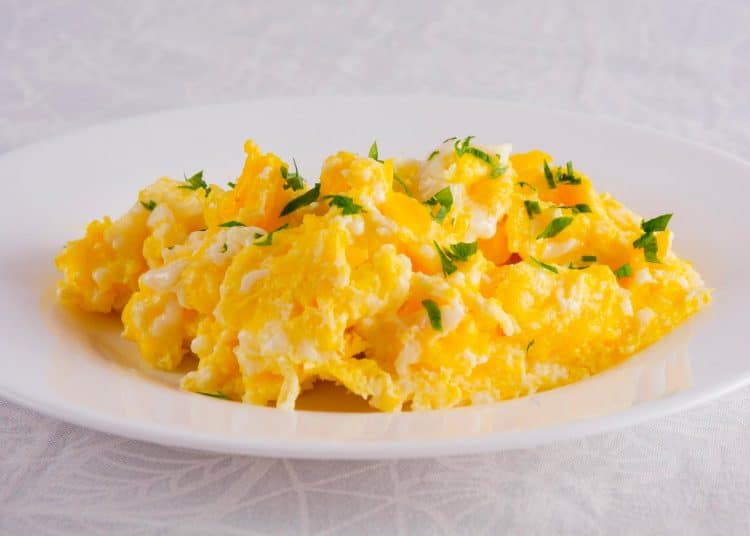
Breakfast:
- 1 whole hand-sized portion of scrambled eggs (2-3 eggs)
- 1 slice of whole-grain toast
- 1 small avocado
Calorie count: 400-450 calories
Total protein: 25 grams
Snack:
- 2 thumbs-sized portions of Greek yogurt (plain, unsweetened)
- 1 small handful of almonds
Calorie count: 200-250 calories
Total protein: 23 grams
Lunch:
- 1 whole hand-sized portion of grilled chicken breast
- 1 cup of mixed green salad (with vegetables of your choice)
- 1 tablespoon of olive oil and vinegar dressing
Calorie count: 350-400 calories
Total protein: 28 grams
Snack:
- 2 thumbs-sized portion of cottage cheese
- 1 small apple
Calorie count: 150-200 calories
Total protein: 22 grams
Dinner:
- 1 whole hand-sized portion of baked salmon
- 1 cup of steamed broccoli
- 1/2 cup of quinoa
Calorie count: 400-450 calories
Total protein: 23 grams
Day Two

Breakfast:
- 1 whole hand-sized portion of omelet made with 3 eggs, spinach, and feta cheese
- 1 slice of whole-grain toast
Calorie count: 400-450 calories
Total protein: 23 grams
Snack:
- 2 thumbs-sized portions of almond butter
- 1 small banana
Calorie count: 200-250 calories
Total protein: 25 grams
Lunch:
- 1 whole hand-sized portion of grilled chicken breast
- 1 cup of quinoa
- 1 cup of roasted vegetables (such as broccoli, bell peppers, and zucchini)
Calorie count: 400-450 calories
Total protein: 33 grams
Snack:
- 2 thumbs-sized portion of hummus
- A handful of baby carrots
Calorie count: 150-200 calories
Total protein: 26 grams
Dinner:
- 1 whole hand-sized portion of lean beef steak
- 1 cup of sweet potato fries (baked)
- 1 cup of steamed asparagus
Calorie count: 400-450 calories
Total protein: 31 grams
Day Three
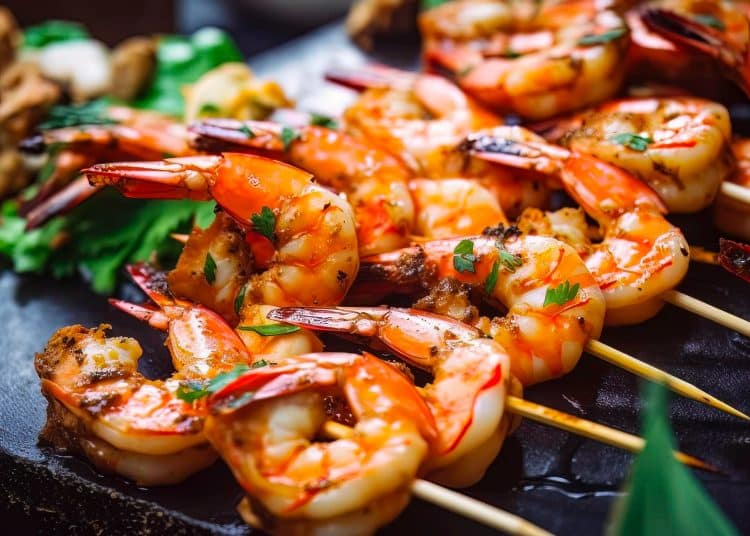
Breakfast:
- 1 whole hand-sized portion of Greek yogurt (plain, unsweetened)
- 1/2 cup of mixed berries
- 1 tablespoon of chia seeds
Calorie count: 300-350 calories
Total protein: 23 grams
Snack:
- 2 thumbs-sized portions of cashews
- 1 small orange
Calorie count: 200-250 calories
Total protein: 22 grams
Lunch:
- 1 whole hand-sized portion of grilled shrimp
- 1 cup of quinoa
- 1 cup of mixed green salad with cherry tomatoes and cucumber
Calorie count: 350-400 calories
Total protein: 27 grams
Snack:
- 2 thumbs-sized portions of turkey jerky
- 1 small pear
Calorie count: 150-200 calories
Total protein: 23 grams
Dinner:
- 1 whole hand-sized portion of baked cod
- 1/2 cup of brown rice
- 1 cup of stir-fried mixed vegetables (broccoli, snap peas, bell peppers)
Calorie count: 400-450 calories
Total protein: 33 grams
Day Four
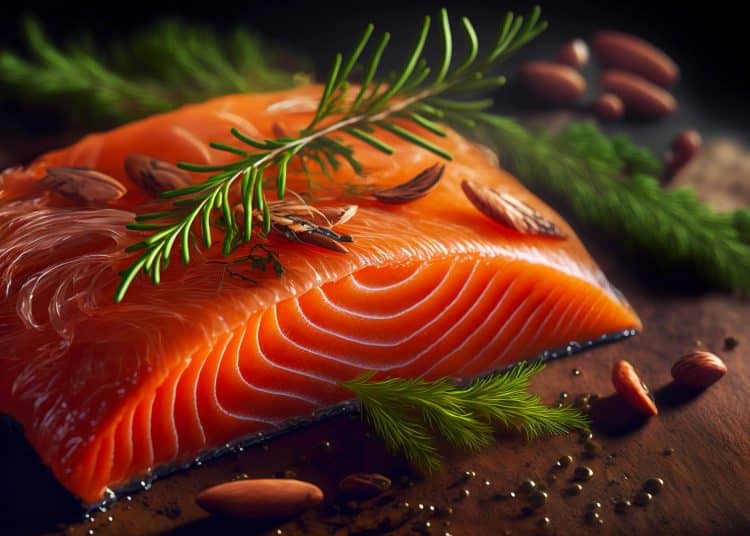
Breakfast:
- 1 whole hand-sized portion of smoked salmon
- 1 whole-grain bagel
- 2 tablespoons of cream cheese
- Sliced tomatoes and red onions
Calorie count: 400-450 calories
Total protein: 27 grams
Snack:
- 2 thumbs-sized portions of mixed nuts
- 1 small orange
Calorie count: 200-250 calories
Total protein: 23 grams
Lunch:
- 1 whole hand-sized portion of grilled tofu
- 1 cup of quinoa
- 1 cup of stir-fried vegetables (broccoli, bell peppers, carrots)
Calorie count: 350-400 calories
Total protein: 28 grams
Snack:
- 2 thumbs-sized portions of edamame
- 1 small apple
Calorie count: 150-200 calories
Total protein: 23 grams
Dinner:
- 1 whole hand-sized portion of roasted chicken breast
- 1/2 cup of whole-wheat pasta
- 1 cup of roasted Brussels sprouts
Calorie count: 400-450 calories
Total protein: 35 grams
Day Five
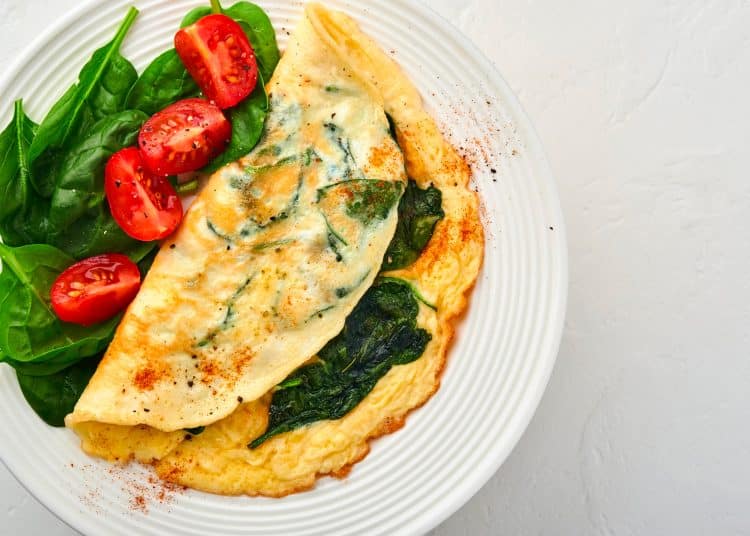
Breakfast:
- 1 whole hand-sized portion of egg white omelet with spinach, mushrooms, and low-fat feta cheese
- 1 slice of whole-grain toast
Calorie count: 300-350 calories
Total protein: 23 grams
Snack:
- 2 thumbs-sized portion of sunflower seeds
- 1 small banana
Calorie count: 200-250 calories
Total protein: 22 grams
Lunch:
- 1 whole hand-sized portion of grilled lean pork tenderloin
- 1/2 cup of quinoa
- 1 cup of mixed green salad with cherry tomatoes and cucumber
Calorie count: 350-400 calories
Total protein: 28 grams
Snack:
- 2 thumbs-sized portions of sliced turkey breast
- 1 small pear
Calorie count: 150-200 calories
Total protein: 23 grams
Dinner:
- 1 whole hand-sized portion of baked halibut
- 1/2 cup of wild rice
- 1 cup of steamed asparagus
Calorie count: 400-450 calories
Total protein: 35 grams
Day Six
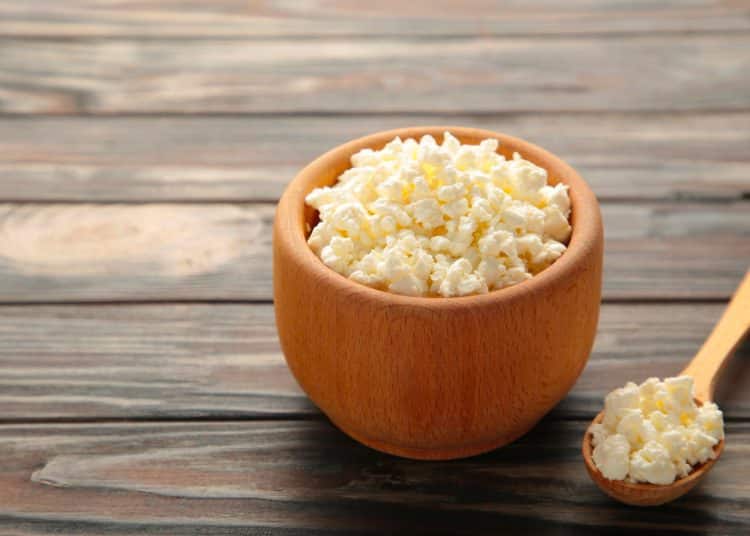
Breakfast:
- 1 whole hand-sized portion of cottage cheese
- 1/2 cup of sliced strawberries
- 1 tablespoon of honey
Calorie count: 300-350 calories
Total protein: 23 grams
Snack:
- 2 thumbs-sized portions of almonds
- 1 small orange
Calorie count: 200-250 calories
Total protein: 21 grams
Lunch:
- 1 whole hand-sized portion of grilled salmon
- 1 cup of quinoa
- 1 cup of roasted vegetables (such as broccoli, bell peppers, and carrots)
Calorie count: 400-450 calories
Total protein: 27 grams
Snack:
- 2 thumbs-sized portions of guacamole
- A handful of baby carrots
Calorie count: 150-200 calories
Total protein: 27 grams
Dinner:
- 1 whole hand-sized portion of lean ground turkey
- Lettuce wraps with turkey, topped with diced tomatoes, onions, and avocado
Calorie count: 400-450 calories
Total protein: 33 grams
Day Seven
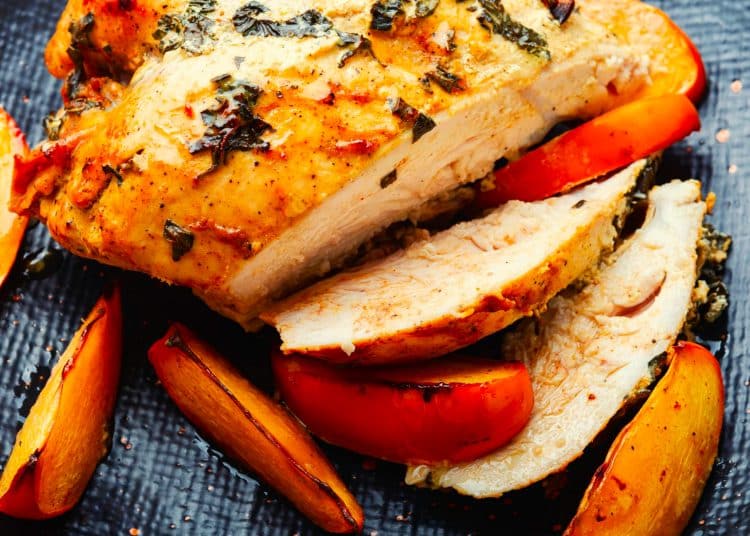
Breakfast:
- 1 whole hand-sized portion of spinach and mushroom omelet (made with 3 egg whites and 1 whole egg)
- 1 slice of whole-grain toast
Calorie count: 300-350 calories
Total protein: 23 grams
Snack:
- 2 thumbs-sized portions of trail mix (almonds, cashews, dried cranberries)
- 1 small banana
Calorie count: 200-250 calories
Total protein: 27 grams
Lunch:
- 1 whole hand-sized portion of grilled shrimp
- 1/2 cup of quinoa
- 1 cup of mixed green salad with cherry tomatoes, cucumber, and feta cheese
Calorie count: 350-400 calories
Total protein: 26 grams
Snack:
- 2 thumbs-sized portions of hummus
- A handful of baby carrots and sliced bell peppers
Calorie count: 150-200 calories
Total protein: 24 grams
Dinner:
- 1 whole hand-sized portion of baked chicken breast
- 1 small baked sweet potato
- 1 cup of roasted Brussels sprouts with balsamic glaze
Calorie count: 400-450 calories
Total protein: 35 grams
Wrap Up
This seven-day high-protein weight loss diet plan can be a template for your long-term nutritional plan. Feel free to switch foods in this diet with your favorite protein sources and recipes. Just make sure to maintain similar calorie and protein counts in each meal.
Combine this diet plan with cardio and strength training to burn more calories, speed up your metabolism, and build lean muscle tissue. Do these things consistently, and you will be well on your way to achieving your weight loss goals.
References
- Saner C, Senior AM, Zhang H, Eloranta AM, Magnussen CG, Sabin MA, Juonala M, Janner M, Burgner DP, Schwab U, Haapala EA, Heitmann BL, Simpson SJ, Raubenheimer D, Lakka TA. Evidence for protein leverage in a general population sample of children and adolescents. Eur J Clin Nutr. 2023 Jun;77(6):652-659. doi: 10.1038/s41430-023-01276-w. Epub 2023 Feb 16. PMID: 36797489; PMCID: PMC10247372.
- Moon J, Koh G. Clinical Evidence and Mechanisms of High-Protein Diet-Induced Weight Loss. J Obes Metab Syndr. 2020 Sep 30;29(3):166-173. doi: 10.7570/jomes20028. PMID: 32699189; PMCID: PMC7539343.
- Yasuda J, Tomita T, Arimitsu T, Fujita S. Evenly Distributed Protein Intake over 3 Meals Augments Resistance Exercise-Induced Muscle Hypertrophy in Healthy Young Men. J Nutr. 2020 Jul 1;150(7):1845-1851. doi: 10.1093/jn/nxaa101. PMID: 32321161; PMCID: PMC7330467.
- Paddon-Jones, D., and Leidy, H. 2014. Dietary protein and muscle in older persons. Current Opinion in Clinical Nutrition and Metabolic Care 17(1): 5–11.
- Leidy et al. 2011. The effects of consuming frequent, higher-protein meals on appetite and satiety during weight loss in overweight/obese men. Obesity (Silver Spring) 19(4): 818–24.”
- Leidy et al. 2011. Neural responses to visual food stimuli after a normal vs higher protein breakfast in breakfast-skipping teens: A pilot fMRI study. Obesity (Silver Spring) 19(10): 2019–25.
- Bopp et al. 2008. Lean mass loss is associated with low protein intake during dietary-induced weight loss in postmenopausal women. Journal of the American Dietetic Association 108(7): 1216–20.
- Parker et al. 2002. Effect of a high-protein, high–monounsaturated fat weight-loss diet on glycemic control and lipid levels in type 2 diabetes. Diabetes Care 25(3): 425–30.
